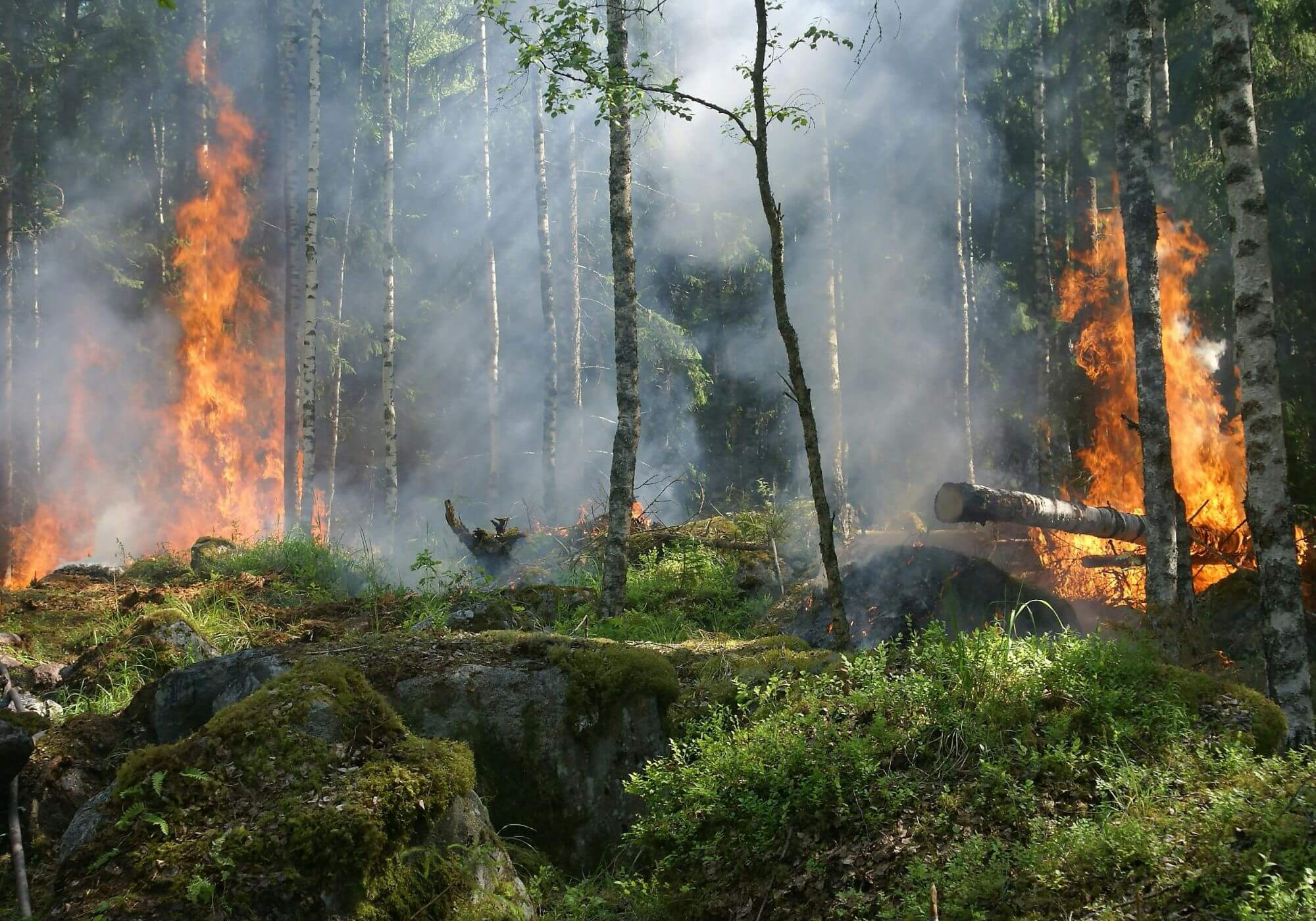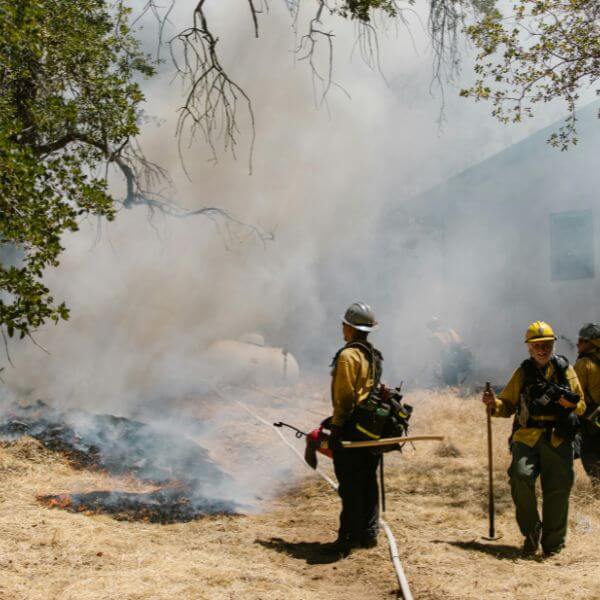What Are the Year-Round Risks of Wildfire Smoke Exposure?
Written By - Serin Dane
on October 1, 2025

As a doctor whose battled environmental hazards for 15 years, I can tell you firsthand: wildfire smoke has become a sneaky, year-round threat—no longer just a hazy guest star of summer. Today, it drifts into communities in every season, carrying a hidden arsenal of health risks that can affect everyone from kids at recess to grandparents in their gardens. This guide will break down everything you need to know—not with scary statistics, but with quirky science facts, actionable hacks, and real hope for cleaner air.
Decoding what’s really in Wildfire Smoke
Picture wildfire smoke not as “fog,” but as a polluted smoothie—one nobody would ever order. Its standout ingredient is PM2.5, a host of microscopic particles invisible to the naked eye that are tiny enough to slip by your body’s defences and nestle deep in your lungs or even your bloodstream, like party crashers at your healthiest cells. These little guys are about 1/30th as wide as a single human hair, and even short exposures can pack a punch.
But PM2.5 doesn’t travel alone. Wildfire smoke also hides a medley of threats: carbon monoxide, which acts like an obsessive friend that binds to your blood cells and blocks the oxygen your body desperately needs; nitrogen oxides and VOCs, those gaseous stowaways that irritate your lungs and eyes while also contributing to city smog; polycyclic aromatic hydrocarbons (PAHs), a category of toxic compounds—some of which are tied to cancer risks; and heavy metals, like lead, that appear in the “cocktail” whenever fires reach urban areas, industrial buildings, or vehicles.
A major 2025 study discovered that up to half the particles in wildfire smoke are organic carbon, derived from burning trees, plants, and soil. The rest is a grab-bag of synthetic toxins, especially when fires rage through towns or along highways and power lines. If you’ve ever noticed the acrid “burning plastic” scent during smoky days, you’ve had an up-close encounter with VOCs in action. The good news is that HEPA air purifiers can serve as tiny bouncers for your home, trapping 99.97% of PM2.5 so your lungs don’t have to do the heavy lifting themselves.

Wildfire Smoke’s Quirky—and Serious—Effects on Your Body
Most people think wildfire smoke just “makes you cough,” but the reality is far more complex. This stuff behaves more like a wild party crasher, messing with almost every system in your body. The most obvious impact is on your lungs and airways. Smoky days can bring on a sore throat, coughing, shortness of breath, and chest tightness, much like a cold you never wanted in the first place. For those with asthma or COPD, symptoms can get severe quite quickly—even people with strong lungs might feel chest tightness or have trouble catching their breath as the smoke lingers.
But the surprises don’t end there. Recent studies from 2025 reveal that wildfire smoke can actually trigger heart attacks and strokes. Breathing in PM2.5 inflames and disturbs blood vessels, spikes blood pressure, and throws off a normal heart rhythm in ways that might remind you of the panic of missing a flight. That light-headedness or headache you feel after a smoky day isn’t imaginary; because carbon monoxide loves to bind to haemoglobin, your blood is temporarily less able to carry oxygen, causing a brief sensation similar to being at high altitude.
Even your brain isn’t spared. Tiny particles can slip past the “blood-brain barrier,” a protective shield for your most vital organ, resulting in brain fog, confusion, forgetfulness, and mood swings. You now have a science-backed excuse for losing your car keys during smoke season! Eyes and skin can experience relentless irritation too, with many reporting streaming, itchy eyes and occasional rashes after just a day or two of poor air quality. When these symptoms hit, use saline eye drops and stay extra hydrated—giving your body a mini “spa day” will help it deal with the chemical stress.
It’s true that kids, seniors, pregnant people, and anyone with chronic heart or lung problems are most vulnerable, but nobody is truly immune. Even the healthiest athletes can get “smoke hangover”—that depleted, fuzzy-headed feeling—after significant exposure.
Turning Air Quality Tracking Into a Game
Let’s face it—old-school air quality reports bordered on cryptic. These days, tech has made tracking wildfire smoke surprisingly fun and motivating. Mobile apps such as AirNow, PurpleAir, and IQAir give you real-time AQI (Air Quality Index) numbers, color-coded for easy decisions. If you can read a stoplight, you can follow these signals: green (0–50) means it’s safe to breathe easy; orange (101–150) is your cue to limit outdoor fun; red or higher (over 150) means it’s time to hunker down indoors with a good book, movie, or a board game.
If you’re a data enthusiast, personal air monitors like Atmotube Pro can be clipped to a backpack or belt, providing instant PM2.5 readings—think of it as a Fitbit for your lungs. Neighbourhood-wide data from PurpleAir sensors lets you compare your street’s air to that of friends on the other side of town, making clean air a point of pride and playful challenge. Some families or groups even set mini-challenges: who can keep their home’s AQI lowest, or who closes the windows fastest whenever the numbers rise.
If your readings jump over 100, take decisive action: switch to indoor activities, run your air purifier, and consider reaching out to neighbours—especially anyone older, pregnant, or with health conditions—to make sure they’re protected too.
Outdoor Life, Remixed: Smart Moves When the Smoke Rolls In
You don’t have to sacrifice health for fun, even during smoky spells. The key is to get creative and flexible. If the air outdoors isn’t safe, trade your usual run or bike ride for a yoga session, dance workout, or living-room strength circuit—there are countless free routines on YouTube and fitness apps. Parents can organize scavenger hunts or build an indoor campsite with kids, keeping spirits high without sacrificing safety.
When possible, schedule any necessary outside tasks or walks for early mornings or late evenings. These times are often less smoky, thanks to cooler temperatures and gentler winds. If you have to venture outside when air quality is poor, don an N95 mask for proper protection. These respirators act as your superhero cape, filtering out most of the PM2.5 before it reaches your lungs.
Want to add a breath of fresh style to your home? Surround yourself with houseplants like snake plants and pathos, which brighten indoor spaces and offer a small boost to air quality. A major study this year underscored the effectiveness of these behavioural tweaks, showing that simply reducing outdoor activity for a few days when AQI is high cuts respiratory symptoms by 40 percent.
Wildfire Smoke in a Changing Climate: Why the Threat Keeps Growing
Why is smoke now a year-round problem? The answer lies in a changing climate. Across North America, wildfire seasons now start up to forty-six days earlier, and dry winters mean there’s never really a “safe” period anymore. In the past two decades, the number of wildfires has jumped by 20 percent, with many burning hotter, faster, and longer.
Perhaps even more surprising, wildfire smoke can travel remarkably far—sometimes more than a thousand miles—turning clear days in distant cities like Denver, Chicago, or Toronto hazy for weeks. This means millions of people far from the actual flames are now dealing with symptoms of poor air quality, from itchy eyes to chronic cough. By 2030, experts predict that western states will have 30 percent more days each year affected by smoke. But the good news is, air quality forecasting tools are better than ever. Real-time smoke maps and 3D models from NOAA make it possible to anticipate dangerous days and plan ahead, all with a few taps on your phone.
The Secret Weapons That Are Against Wildfire Smoke
Instead of daunting Trends the community action brings hope. Across the U.S. and Canada, neighbours are stepping up with creative solutions. In Oregon, one neighbourhood banded together to buy air purifiers in bulk, cutting indoor PM2.5 by 60 percent during the worst smoke waves. Groups like “Smoke Busters” throughout the West now host DIY workshops, teaching people to build their own air filters from box fans and affordable materials, or sharing tips on making homes more airtight.
Local book clubs and support groups have adapted into “smoke prep” collectives, working together to distribute masks, swap strategies, and boost each other’s spirits on tough days. Kids are leading change, too—schools in several states now fundraise for classroom filtration systems and organize “smoke-safe” PE days in the gym or library.
Be the Solution: Your Action Checklist
You have more power than you think to reduce wildfire smoke’s toll. Start by investing in a HEPA filter for your bedroom or main living area and stocking a “smoke kit” with N95s, bottled water, saline drops, and your necessary medicines. Sealing up doors and windows with weatherstripping or simple draft blockers can make a big difference in keeping smoke at bay. Make it a habit to check AQI each morning, just like you check the weather. Share updates or extra supplies with neighbours and plug into local initiatives online—community resilience is more contagious than wildfire itself. Don’t forget to take care of yourself, too—lots of water, rest, and nutritious food help your body recover from smoky days.
The Power in Your Hands- The Conclusion
Wildfire smoke happens to dim the skyline however it can never darken the determination of the creativity that is connected with communities. The AQI app will help every check-in with a friend. Let us here face the smoky days together and with knowledge and mutual support empower each other and breathe easier today with the seasons ahead.
More Blogs













